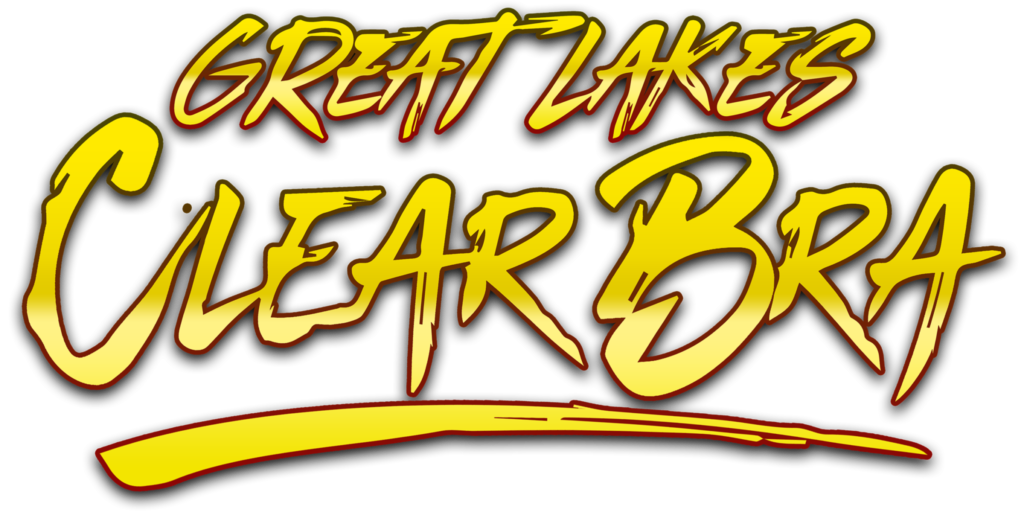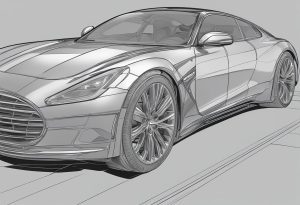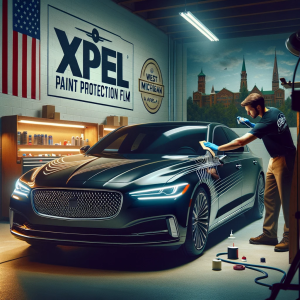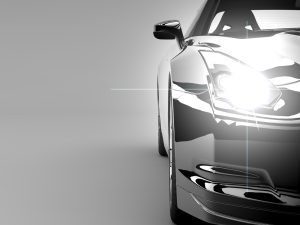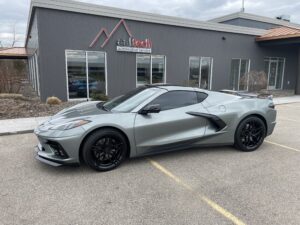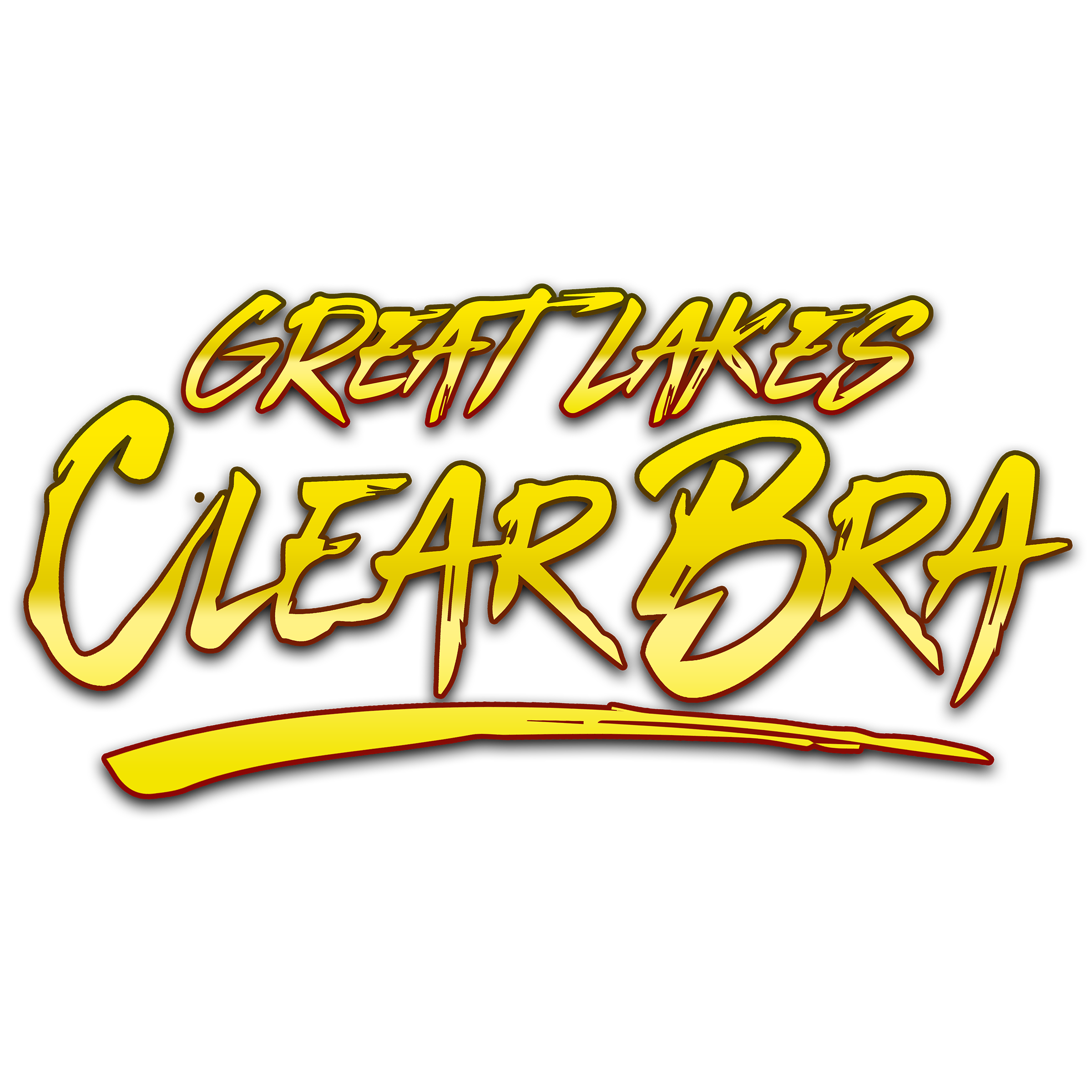
Is Anything Better Than PPF? Paint Protection Film
The article discusses alternatives to Paint Protection Film (PPF). This is not an article on a Mutual fund; this is for vehicle paint protection film. It explores ceramic coatings, vinyl wraps, and emerging technologies as potential alternatives to PPF, highlighting their advantages and limitations. Factors such as durability, maintenance, cost, and aesthetics are compared, emphasizing the need for individual considerations based on budget, vehicle use, aesthetic preferences, long-term plans, and professional installation. It concludes that the best choice depends on individual needs and preferences, urging car owners to prioritize protecting and preserving their vehicle’s paintwork.
Is anything better than PPF? This question has been on the minds of many car enthusiasts and owners looking for the best vehicle protection. Paint protection film (PPF) has long been considered the gold standard for preserving a car’s paint job, shielding it from damage caused by road debris, UV rays, and even minor scratches. But are there any alternatives that offer superior protection?
In this article, we will explore whether there are any products or techniques that surpass the benefits of PPF. We will delve into ceramic coatings, vinyl wraps, and other emerging technologies that claim to provide better paint protection. Through thorough research and analysis, we will compare the pros and cons of these alternatives to help you make an informed decision about the best way to safeguard your vehicle’s appearance.
So, keep reading if you’ve been curious about what else is out there beyond PPF. We’ll provide all the information you need about the latest advancements in paint protection and help you determine if anything can beat the tried-and-true Paint Protection Film.
Limitations of PPF
While PPF has long been considered the go-to choice for paint protection, it does have its limitations. One of the main drawbacks of Paint Protection Film is its vulnerability to discoloration over time. Exposure to sunlight and other environmental factors can cause the film to yellow or fade, diminishing its aesthetic appeal. Additionally, PPF is prone to damage from certain chemicals, such as petroleum-based solvents, which can eat away at the film and compromise its protective properties.
Another limitation of PPF is its susceptibility to peeling and bubbling. Improper installation or poor-quality film can result in unsightly bubbles and edges that peel away from the car’s surface. This not only affects the appearance of the vehicle but also reduces the film’s ability to provide adequate protection against scratches and other forms of damage.
Furthermore, Paint Protection Film can be expensive, especially for larger vehicles or full-body applications. Professional installation and maintenance costs can add up, making it a significant investment for car owners. These limitations have prompted the search for alternatives that can offer better protection without the drawbacks of PPF.
Alternatives to PPF: Ceramic Coatings
One popular alternative to PPF is ceramic coating. These coatings are made from nanoparticles that form a protective layer over the car’s paintwork. Ceramic coatings offer several advantages over Paint Protection Film, including enhanced durability, chemical resistance, and a longer lifespan. Unlike PPF, ceramic coatings are not susceptible to discoloration or peeling, providing a more long-lasting solution for paint protection.
Another benefit of ceramic coatings is their hydrophobic properties. The slick surface created by the coating repels water and prevents dirt, grime, and other contaminants from adhering to the paintwork. This makes it easier to clean the vehicle and maintain its glossy appearance. Additionally, ceramic coatings can provide UV protection, shielding the paint from harmful rays that can cause fading and oxidation.
However, it’s important to note that ceramic coatings have limitations. They require careful and precise application, as any mistakes during the process can result in uneven coverage or streaks. Moreover, ceramic coatings can be more expensive than PPF, especially for high-quality products with superior performance. Despite these drawbacks, ceramic coatings have gained popularity among car enthusiasts seeking an alternative to PPF.
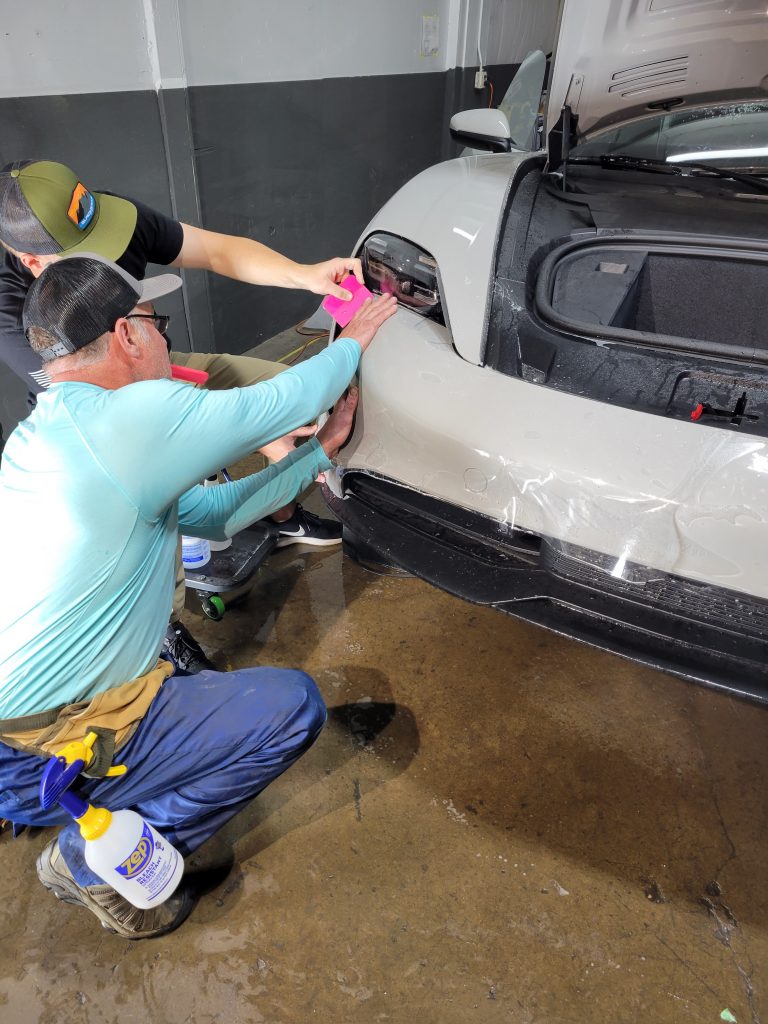
Compared to PPF (vinyl wraps)
Vinyl wraps are another PPF alternative that has gained traction in recent years. These wraps consist of a thin layer of vinyl applied to the car’s exterior, providing protection and the opportunity to customize the vehicle’s appearance. Vinyl wraps offer a range of benefits, including resistance to UV rays, scratches, and stone chips. They can also be easily removed without damaging the underlying paintwork, making them a flexible option for those who want to change the look of their vehicle.
One significant advantage of vinyl wraps is their virtually limitless design possibilities. With a wide array of colors, textures, and finishes, car owners can transform their vehicles into unique works of art. Additionally, vinyl wraps provide some paint protection by defending the car’s original paint from environmental deterioration and minor impacts.
However, it’s also essential to consider the drawbacks of vinyl wraps. While they provide a high level of protection, they are not as durable as PPF Paint Protection Film or ceramic coatings. Over time, vinyl wraps can be prone to scratches and fading, especially in high wear and tear areas. Additionally, the application process requires skill and expertise to ensure a seamless and bubble-free finish. Therefore, professional installation is recommended to achieve the best results.
Other emerging technologies
In addition to ceramic coatings and vinyl wraps, several other emerging technologies in paint protection claim to offer superior performance. These include self-healing coatings, nanotechnology-based products, and even spray-on solutions. While these alternatives show promise, they are still relatively new and may not have undergone extensive testing and evaluation. As such, it’s essential to approach these options cautiously and do thorough research before considering them viable alternatives to PPF.
Comparison of Alternatives
To make an informed decision about the best paint protection method for your vehicle, it’s essential to compare the pros and cons of each alternative. Below is a comparison of PPF, ceramic coatings, vinyl wraps, and other emerging technologies based on critical factors such as durability, ease of maintenance, and cost:
- Durability: PPF offers excellent durability, with a lifespan of up to 10 years when properly maintained. Ceramic coatings can last up to 3-5 years, while vinyl wraps typically have a lifespan of 3–7 years, depending on the quality of the material. The durability of emerging technologies varies, and further research is needed to determine their long-term performance.
- Maintenance: PPF requires regular cleaning and occasional reapplication of a protective sealant to maintain its effectiveness. Ceramic coatings and vinyl wraps are relatively low-maintenance, requiring only routine washing and periodic inspection. The maintenance requirements of emerging technologies are still being studied and may vary depending on the specific product.
- Cost: PPF is generally the most expensive option, especially for full-body applications. Depending on the brand and quality, ceramic coatings and vinyl wraps can also be costly. The cost of emerging technologies may vary widely, and it’s essential to consider the long-term value they offer in terms of paint protection.
- Aesthetics: PPF provides a transparent, virtually invisible protective layer, preserving the vehicle’s original appearance. Ceramic coatings enhance the gloss and depth of the paint, while vinyl wraps offer endless design possibilities. Emerging technologies may offer unique aesthetic features that appeal to car owners.
Factors to consider
When choosing between PPF and its alternatives, there are several factors to consider based on your individual preferences and needs:
- Budget: Determine how much you are willing to invest in paint protection and weigh the cost versus the long-term benefits.
- Vehicle Use: Consider your driving and the level of protection required. A more durable option may be preferable if you frequently encounter rough roads or off-road conditions.
- Aesthetic Preferences: Decide whether you prioritize a virtually invisible protective layer or the ability to customize your vehicle’s appearance.
- Long-Term Plans: Consider how long you plan to keep the vehicle and whether you are open to changing its look.
- Professional Installation: Some alternatives, such as PPF and vinyl wraps, require professional installation for optimal results. Factor in the cost and availability of experienced installers in your area.
By carefully weighing these factors and considering the information provided, you can decide on the best paint protection method for your vehicle.
Things to consider
While PPF has long been considered the gold standard in paint protection, some alternatives offer unique advantages. Ceramic coatings provide enhanced durability and hydrophobic properties, while vinyl wraps offer customization options and a degree of security. Emerging technologies show promise but require further evaluation. Ultimately, the best choice depends on your individual needs and preferences.
Before deciding, consult with professionals in the field and consider factors such as budget, vehicle use, aesthetic preferences, and long-term plans. Remember that paint protection is an investment in the longevity and appearance of your vehicle, so it’s essential to choose wisely. Whether you stick with the tried-and-true PPF or explore the alternatives, prioritize protecting and preserving your car’s paintwork.
SUPPORT
Copyright © Great Lakes Clear Bra 2024. All Rights Reserved.
